One such journalist is Emmet Ryan who writes a column called “The Spread” that features every week in The Sunday Business Post. The column examines the betting associated with various sporting events. Emmet puts his head on the block each week by providing the reader with a suggested bet. Unfortunately for those following his GAA advice, his success rate for the latter stages of the All-Ireland series in hurling and football has not been good.
Emmet suggested punters go for a Kilkenny win in the hurling final at odds of 4/5. The sides ended level. Last week he advocated the selection of Donegal at 8/11. Kerry won and the bet went down. Except for the Dublin –Donegal football semi-final, he had little success at the semi-finals stage (I don’t have a record of his prediction for the Dublin-Donegal game). In the hurling semi-finals he suggested the punters should take Limerick at 5/2 and Cork at evens. Kilkenny and Tipperary triumphed. In the drawn football game between Kerry and Mayo, Emmet opted for a Mayo win at 10/11.
It is to Emmet’s credit that one can read his columns after the event and believe the result should have gone the way he predicted.
I performed little better in my prediction for the drawn Kilkenny-Tipperary game. My prediction was made with approximately 60 minutes of the 70 minutes elapsed. With Kilkenny 4 points ahead of Tipperary, I turned to my nephew and said “put the house on a Tipperary win”. I was convinced it was inevitable. Fortunately, no money was wagered or lost.
My prediction for tomorrow’s game has to do with the attendance. The table below shows that the replays of 2012 and 2013 attracted more spectators than the drawn games (although smaller TV audiences). In 2012 the replay was on a Sunday. Last year the replay was a Saturday evening game - just like tomorrow. One of the reasons for the greater numbers at the replays is the decision of the GAA to reduce ticket prices for the replays. This limited evidence suggests the attendance tomorrow will be greater than it was three weeks ago. I'm not so sure. Prior to the drawn game there were stories of tickets being returned to Croke Park (see how tickets are distributed for sale here). The availability of tickets in the surrounds of Croke Park three weeks ago suggests the demand for another Kilkenny-Tipperary game was down on previous years. A cracking drawn game may restore the desire of the fans. However, I'm predicting a decline in the numbers attending tomorrow.
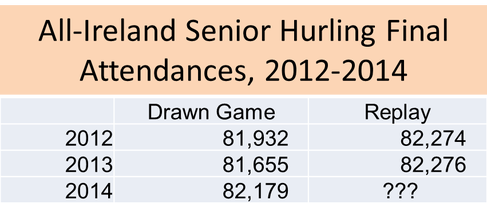
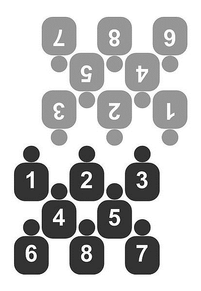
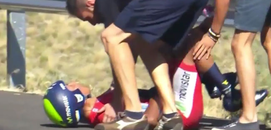
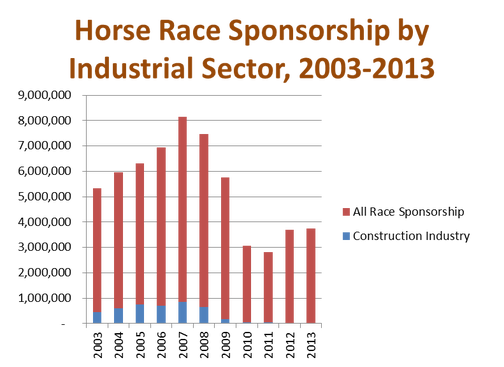
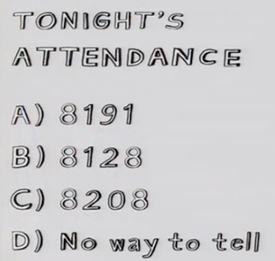
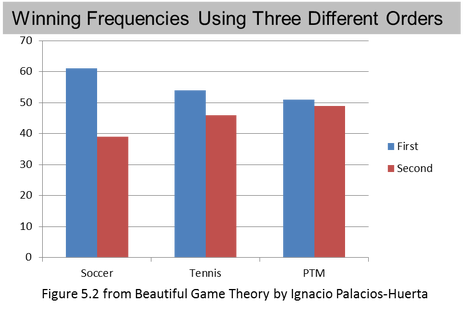
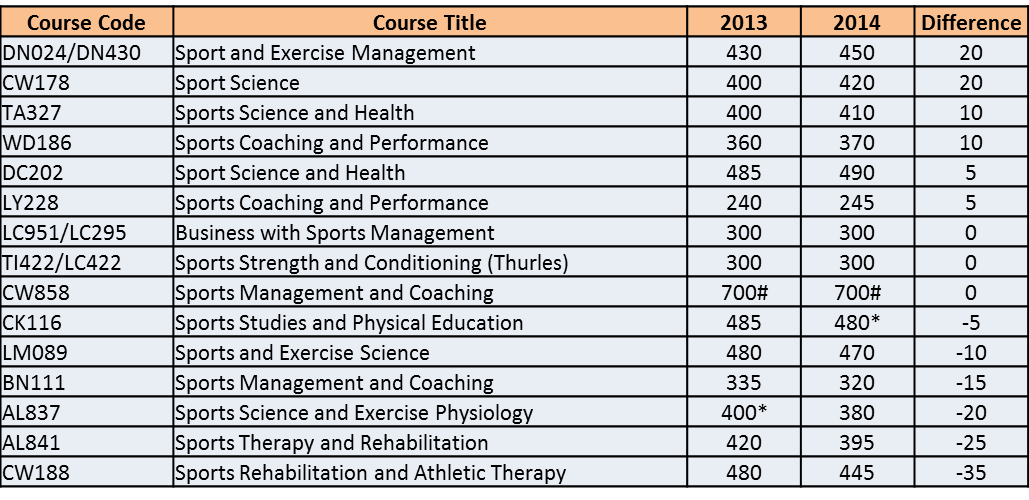
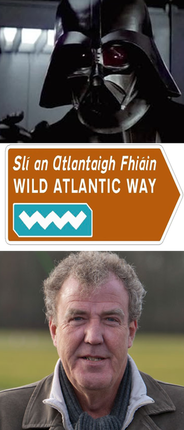
 RSS Feed
RSS Feed